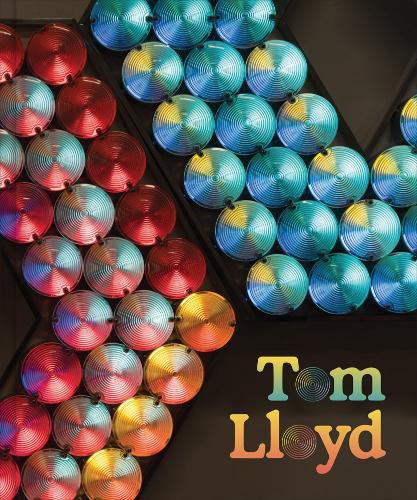Readings Newsletter
Become a Readings Member to make your shopping experience even easier.
Sign in or sign up for free!
You’re not far away from qualifying for FREE standard shipping within Australia
You’ve qualified for FREE standard shipping within Australia
The cart is loading…






A milestone publication shedding light on the groundbreaking contributions of an under-recognized artist whose art and activism resonates in contemporary culture
Published with Studio Museum in Harlem.
Collaborating with an engineer at the Radio Corporation of America, American artist Tom Lloyd developed a highly experimental and technologically advanced art practice in the 1960s that challenged popular understandings of the work and role of Black artists. In 1968 his pioneering artwork was the focus of the inaugural exhibition at the Studio Museum in Harlem, Electronic Refractions II. Based on extensive new scholarship and intensive conservation work, this publication accompanies a landmark retrospective exhibition at the Studio Museum in Harlem exploring 20 years of the artist's career, including his pivotal contributions to the intersection of art and technology, and paying tribute to his activism. This is the first-ever comprehensive catalog on the artist and features an exclusive selection of never-before-seen images that chronicle Lloyd's career, including photographs of the artist collaborating with engineer Alan Sussman, nonextant works and past installations. Designed by Miko McGinty and richly illustrated with full-color reproductions of artworks, studio photographs and an illustrated chronology, Tom Lloyd also includes new essays by former Studio Museum curator Connie H. Choi, conservator Reinhard Bek, historian Krista Thompson, Studio Museum senior curatorial assistant Habiba Hopson, and artists Paul Stephen Benjamin, Nikita Gale and Glenn Ligon. Artist, activist and community organizer Tom Lloyd (1929-96) was an early pioneer of using electric light as an artistic medium. Born and raised in Jamaica, Queens, he was the founder of the Store Front Museum/Paul Robeson Theatre, Queens's first art museum.
$9.00 standard shipping within Australia
FREE standard shipping within Australia for orders over $100.00
Express & International shipping calculated at checkout
Stock availability can be subject to change without notice. We recommend calling the shop or contacting our online team to check availability of low stock items. Please see our Shopping Online page for more details.
A milestone publication shedding light on the groundbreaking contributions of an under-recognized artist whose art and activism resonates in contemporary culture
Published with Studio Museum in Harlem.
Collaborating with an engineer at the Radio Corporation of America, American artist Tom Lloyd developed a highly experimental and technologically advanced art practice in the 1960s that challenged popular understandings of the work and role of Black artists. In 1968 his pioneering artwork was the focus of the inaugural exhibition at the Studio Museum in Harlem, Electronic Refractions II. Based on extensive new scholarship and intensive conservation work, this publication accompanies a landmark retrospective exhibition at the Studio Museum in Harlem exploring 20 years of the artist's career, including his pivotal contributions to the intersection of art and technology, and paying tribute to his activism. This is the first-ever comprehensive catalog on the artist and features an exclusive selection of never-before-seen images that chronicle Lloyd's career, including photographs of the artist collaborating with engineer Alan Sussman, nonextant works and past installations. Designed by Miko McGinty and richly illustrated with full-color reproductions of artworks, studio photographs and an illustrated chronology, Tom Lloyd also includes new essays by former Studio Museum curator Connie H. Choi, conservator Reinhard Bek, historian Krista Thompson, Studio Museum senior curatorial assistant Habiba Hopson, and artists Paul Stephen Benjamin, Nikita Gale and Glenn Ligon. Artist, activist and community organizer Tom Lloyd (1929-96) was an early pioneer of using electric light as an artistic medium. Born and raised in Jamaica, Queens, he was the founder of the Store Front Museum/Paul Robeson Theatre, Queens's first art museum.